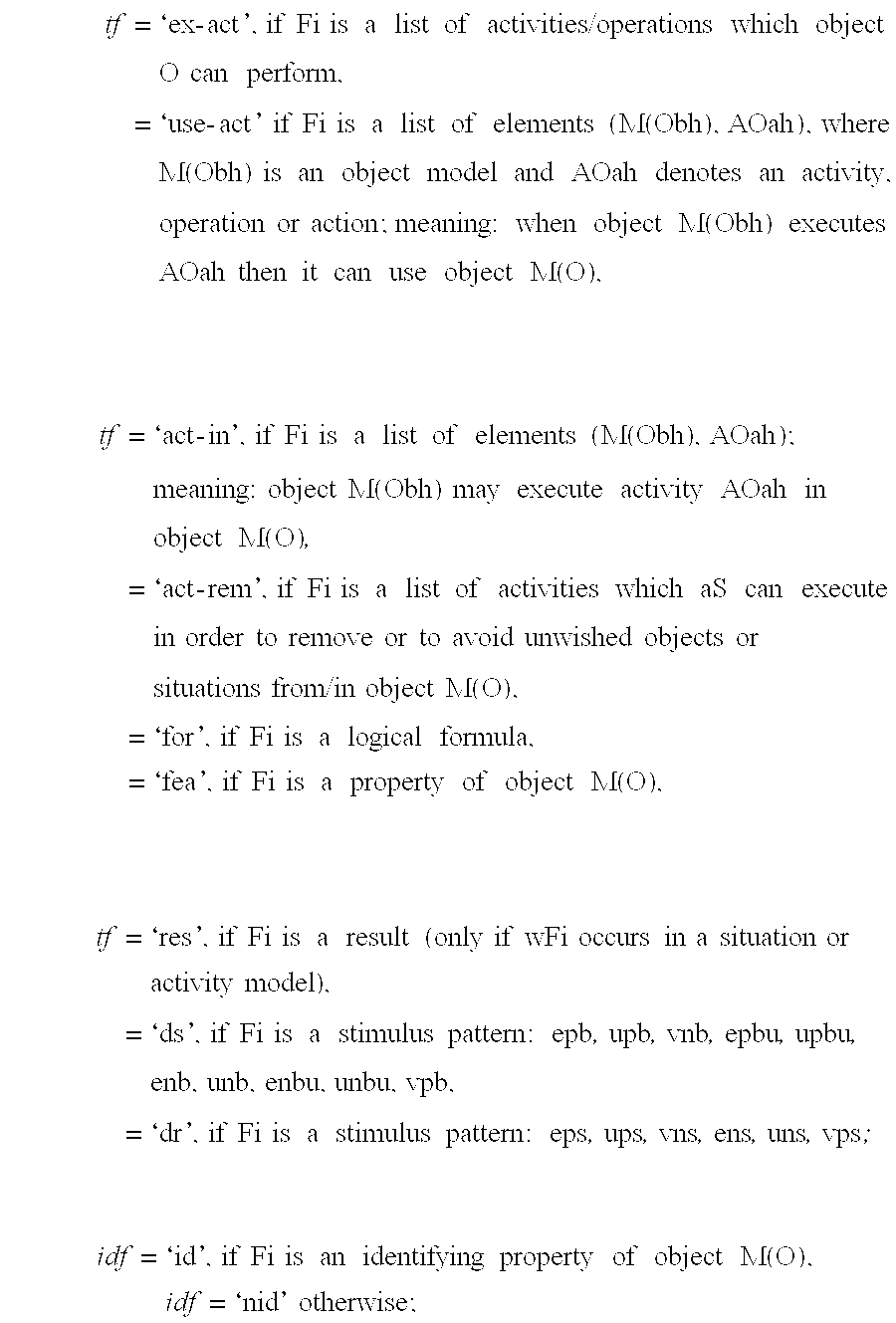Determination and control of activities of an emotional system
- Summary
- Abstract
- Description
- Claims
- Application Information
AI Technical Summary
Benefits of technology
Problems solved by technology
Method used
Image
Examples
case b
[0239]ii. As said in (i), object O1 was recognized as M(O) in object Q1, WP recognizes O1 in object Q2 as follows:[0240]Case a: in M(Q2) or clo(M(Q2)) or in a list exOSa(AV2i,su-ak2ij) (in LOSa(Q2)) is declared a model M(Or) such that M(Or) belongs to class M(O) (in graph SeG) and M(Or) is a good model for object O1: then O1 is an expected object in object Q2 and is recognized as M(Or).[0241] M(O) or clo(M(O)) is declared in M(Q2) or in clo(M(Q2)) or in a list exOSa(AV2i,su-ak2ij) (in LOSa(Q2)): then O1 is an expected object in object Q2 and is recognized as M(O).[0242]Case c: neither case (a) nor case (b) (i.e. in clo(M(Q2)) is no good model for object O1); then O1 is an unexpected object in object Q2 and is recognized as M(O).[0243]WP puts (.,O1,M(Or), . . . ‘exp’) or (.,O1,M(O), . . . , ‘exp’) or (.,O1,M(O), . . . , ‘nexp’) in the lists apOS(Q2) and nOS(Q2). If M(Or) (or M(O)) occurs in a list exOSa(AV2n,su-ak2nj), in LOSa(Q2), then WP puts (.,O1,M(Or), . . . ), (or (.,O1,M(O), ....
PUM
 Login to View More
Login to View More Abstract
Description
Claims
Application Information
 Login to View More
Login to View More - R&D
- Intellectual Property
- Life Sciences
- Materials
- Tech Scout
- Unparalleled Data Quality
- Higher Quality Content
- 60% Fewer Hallucinations
Browse by: Latest US Patents, China's latest patents, Technical Efficacy Thesaurus, Application Domain, Technology Topic, Popular Technical Reports.
© 2025 PatSnap. All rights reserved.Legal|Privacy policy|Modern Slavery Act Transparency Statement|Sitemap|About US| Contact US: help@patsnap.com



